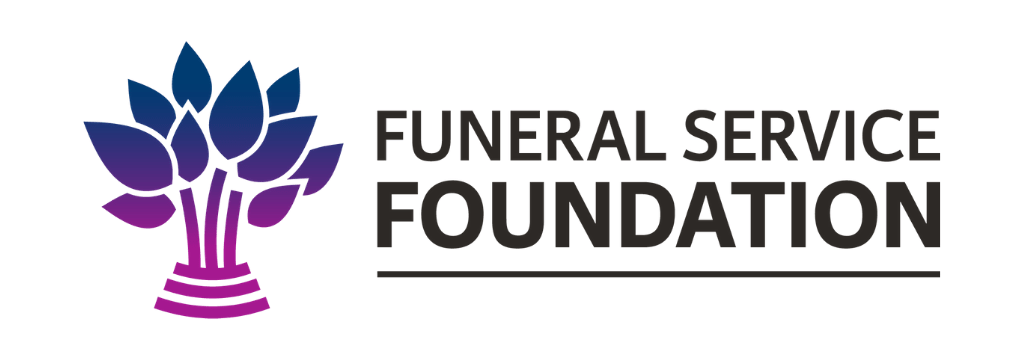Death & Grief: It’s All Just Harder During the Holidays
Deathcare professionals know better than most that the holiday season isn’t just a time for being keenly aware of the loved ones who are no longer joining us around the Christmas tree or dinner table. For many people, the emotions that accompany the season — grief, of course, but also depression, loneliness, worry, etc. — can take a tremendous physical toll, especially when paired with months of cold, dreary weather, which can wreak its own havoc on our health. In fact, many studies show that more deaths happen between late November and early January than any other time of year. Holiday deaths only compound the problem, leading to unfortunate annual observations of death anniversaries in a time that should be merry and bright.
You’ve undoubtedly perceived differences in families and in the funerals that take place over the holidays, but have you ever wondered about the statistics behind those perceptions, and how you might be able to help? Now that we’ve put the tinsel and wrapping paper behind us and are looking ahead to a brand new year, we can pause for just a moment to learn more.
Why are Death Rates Higher During the Holidays?
Studies show that adults have a higher chance of dying from natural causes on major winter holidays than on any other day of the year. According to CNN: “Several studies show you have a greater chance of dying on Christmas, the day after Christmas or New Year’s Day than any other single day of the year. This is true for people who die of natural causes, which account for 93% of all deaths, according to the Centers for Disease Control. It’s also true, researchers say, for people who die of the five most common diseases: circulatory problems, respiratory diseases, endocrine/nutritional/metabolic problems, digestive diseases, and cancer. There’s a spike in deaths for all age groups on those days with one exception – children.”
Graph from Legacy.com illustrating US death rate percentages from causes that are affected by season from 1984-2014
Legacy.com has gathered large amounts of data to figure out why deaths spike in the winter. Due to SAD, many people assume that suicide rates jump in December and January, but data shows that this isn’t true. Suicide rates are much higher in summer months, while health conditions and natural causes account for the vast majority of winter/holiday deaths. The data gathered by Legacy points to the fact that flu and pneumonia strike hardest in the winter months, and other studies have shown that heart attack rates increase by up to 30% in colder months. Their data also shows that an average of 69% of all deaths in the US from 1984 to 2014 are from causes that fluctuate in number by season.
Graph from Legacy.com averaging US death rates by month from 1984-2014
Other sources like NBC credit “the emotional stress associated with the holidays, changes in diet and alcohol consumption, less staff at medical facilities and changes in the physical environment (eg, visiting relatives)” as contributing to increased death rates during the holidays. Recent research from New Zealand reported in the Washington Post further suggests that cold weather has less to do with the jump in deaths around Christmas, and more to do with the previously mentioned factors of under-staffed medical facilities, changes in diet, familial and environmental stressors, and people with illnesses intending to put off seeking medical attention until after the holidays.
All of these factors mean that “the most wonderful time of year” can also be very difficult for a lot of people in your community.
Holiday grief
Since research shows that deaths from natural causes increase by up to 5% during the holiday season, and 69% of all annual deaths are from causes that are affected by the winter season, it makes sense that more people would be struggling with fresh grief, and grief from death anniversaries during this time of year. Losing a loved one can make celebrating the holidays feel especially difficult, especially when society tells us that we should be feeling thankful, merry, and a plethora of other cheerful ways during this season.
According to some therapists, grief can feel compounded during the holidays because of constant and overwhelming messaging (from movies, commercials, party invites, and societal expectations) about the importance of spending quality time with your loved ones over the holidays. This messaging, though not malicious in intent, is difficult for those of us who are already very aware of the fact that time with our deceased loved ones is not possible. Additionally, those of us who are grieving estrangement or rejection from our family of origin could also feel particularly sensitive about the pressure to prioritize time within traditional family structures.
For those of us experiencing fresh grief from a recent loss, it’s important to understand that pronounced grieving during the holidays is absolutely to be expected in the first year (or few) after a death occurs. Feeling unmotivated to participate in traditions, feeling pain at constant reminders of past years and happy times, and the sadness of acknowledging that things feel different can be particularly sharp during this time of year. Please know that it’s okay to feel the way you do, to ask for what you need from family and friends, and to take care of yourself in whatever way feels best (skipping certain events, building new memorial rituals, releasing emotions through crying, etc.)
Share these tips for dealing with holiday grief
One of the most helpful ways to move through holiday grief and honor loved ones who have passed is to create meaningful rituals in their honor during this time of year. Rituals are an important part of the grieving process. They help people feel grounded, foster a sense of familiarity, show respect for our deceased loved ones, connect us to others in shared grief when practiced together, and create a special space for accepting and acknowledging our grief. As families often look to deathcare professionals for guidance on dealing with grief and loss, it’s good to have some suggestions like these in your toolbox:
Holiday grief rituals might include:
- gathering the family to look through old photographs at a special time and place
- participating in holiday family traditions that the deceased loved one enjoyed or valued
- cooking a special holiday meal together that includes the deceased loved one’s favorite foods
- sitting down as a family to share stories about or write letters to the deceased person,
- creating a winter or holiday-themed memorial altar together that honors the deceased loved one who passed away
- anything else that is done with the intention of honoring and remembering your loved one, and creating a special container for acknowledging and sharing your grief
The most important thing to share with families when talking about grief rituals is that they can be anything and look like anything, as long as the intention behind them is holding space for grief and remembrance in a way that feels comforting to them. These rituals can be done every holiday season, or as often as they want throughout the year. They can be shared with friends and family, practiced alone, or a combination. Ultimately, everyone gets to decide what feels best to them.
For more in-depth ideas for creating holiday grief rituals, download Death Curious’ free ebook “Rituals to Support Grieving.”
No Wrong Way to Grieve
No matter what time of year it is, it’s important to remind your families (and yourself, for that matter) that there is no wrong way to grieve. Integrating grief looks different to every person and with every loss. Like the process of grieving itself, there is no timeline to adhere to and no prescribed steps to follow when it comes to practicing grief rituals. Your grief and your rituals don’t have to look like any specific thing… it’s your grief, so it will look and feel uniquely yours, even while grieving during the holidays. Grief isn’t something that we heal from. Grief is something that we integrate, make space for, and grow around … and sharing this fact with the families you serve could make the difference in their own grieving — and healing — processes.




